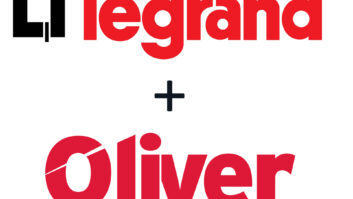Home-theater-in-a-box (HTiB) solutions continued to set sales records in 2003, at least in units, and they expect to break records again in 2004 with a greater selection of systems designed to counter potential objections from decor-conscious consumers.
Suppliers also expect growth to attract more competitors in 2004, some of whom will include speaker makers challenged by a declining component-speaker market. Newcomers include speakermakers Infinity, Klipsch and KEF.
To increase HTiB penetration, companies such as Pioneer, Samsung and Klipsch have developed systems with speakers designed to blend cosmetically with flat-panel displays. To attract consumers who don’t want to clutter up their rooms with speakers, companies such as Samsung and Pioneer have developed systems that produce a 5.1-channel soundfield without placing surround speakers in their traditional locations on both sides of the seating area.
Similarly, Pioneer will increase its HTiB selection with wireless surround speakers to two.
In other system developments at CES:
- Klipsch will join Boston Acoustics in offering a home theater system that simplifies video connections by upconverting composite and S-video inputs to component output.l JVC will show its first DVD-RAM-equipped HTiB, joining Panasonic in this segment.
- JBL will show what could be the industry’s first HTiB with included video display, a 50-inch high-definition plasma monitor that brings the system price to $15,000.
- JVC and Samsung will join Panasonic in offering two-speaker DVD systems with virtual surround technologies intended for use in secondary rooms such as bedrooms.
(See story at left for details.)
Despite early-year declines in factory-level unit and dollar sales, HTiB system sales rebounded and increased an estimated 4.5 percent in dollars to $936 million and 18.5 percent in units to 3.2 million, the company estimates. In 2004, the company projects a 22 percent gain in units but a 1.7 percent decline in dollars.
“The dip earlier in the year might have been due to over-inventory situations, but sales continued to grow at the retail level with consumers in 2003,” said Panasonic merchandising VP Reid Sullivan.
Another major industry supplier estimated 2003 unit growth of 18 percent to 3.3 million but a 1 percent decline in dollars to $890 million. This supplier projects unit and dollar growth in 2004 of 15 percent and 2.2 percent, respectively.
However the industry stood in 2003, suppliers agree all the growth came in DVD-equipped systems. Panasonic estimates that sales of DVD-equipped systems rose in units by 41 percent to 2.4 million in 2003 and 16 percent in dollars to $736 million. The company projects DVD HTiB sales will grow in 2004 by 33 percent in units to 3.2 million and 4.6 percent in dollars to $770 million.
Sales of HTiBs lacking DVD fell in 2003 by 20 percent in units to 800,000 and 24 percent in dollars to $200 million, Panasonic estimates. In 2004, the company projects a 12.5 percent unit decline to 700,000 and 25 percent dollar decline to $150 million.













